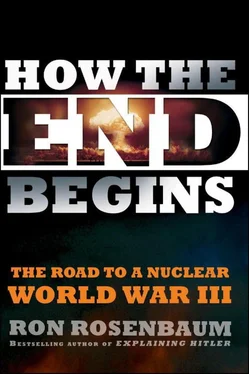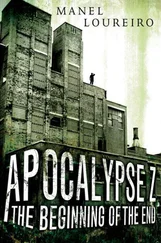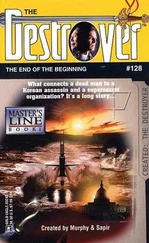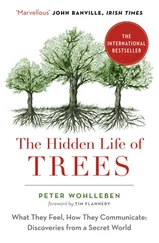President Jimmy Carter’s national security adviser told his CIA director, Stansfield Turner, a chilling story of his own. On June 3, 1980, at 2:26 A.M., Zbigniew Brzezinski was awakened by the NORAD (North American Aerospace Defense Command) warning center in Colorado, and was told he must notify the president that their screens showed an incoming nuclear strike. [21] cited by Stansfield Turner, CIA director under President Carter, in his book Caging the Nuclear Genie: An American Challenge for Global Security (Boulder: Westview, 1997).
According to Brzezinski the error was detected only “one minute” before Brzezinski had planned to tell the president of a NORAD warning that 2,200 Soviet missiles had been launched against the United States. Brzezinski hesitated long enough for NORAD to call back and say a mistake had been made: the call had been triggered by nuclear warning training tapes being fed into the warning room screens and mistaken for the real thing.
And then there was Colonel Petrov; the midlevel Russian officer in the Strategic Rocket Force who was manning the Kremlin’s underground warning center on September 26, 1983, when radar signaled a massive nuclear strike coming over the pole from the U.S. He had minutes to decide to awaken Soviet premier Yuri Andropov for a decision about whether to launch the Russian arsenal. He decided not to and it turned out to be a technical error. [22] David Hoffman, The Dead Hand (New York: Doubleday, 2009), p. 6–11.
There were other close calls on the Soviet side. A British mole in the KGB, Oleg Gordievsky, was able to convince his British intelligence contacts that the Kremlin believed an upcoming NATO exercise (in the fall of 1983, known as Operation Able Archer) was some kind of cover for a surprise attack against the U.S.S.R.—and that the Kremlin was making preparations for a preemptive nuclear attack to get the jump on the West. [23] Oleg Gordievsky, Book review of War Scare: Russia and America on the Nuclear Brink, by Peter Vincent Pry, The Spectator, November 20, 1999.
Gordievsky’s warning led to some key decisions to diminish Soviet suspicion, such as President Reagan not leaving the White House for his “undisclosed location” command bunker that October as he would have if a real attack had been planned. No one can know how things might have turned out if a well-placed mole had not stopped the mutual ratcheting up of suspicion.
Luck: who knows what would have happened if Brzezinski had not hesitated, if it had been someone other than Petrov on duty, or if Gordievsky had not spoken up. Nuclear triumphalists look at this history and maintain that “the system worked.” Nuclear deterrence worked. But did it work because it was so well designed, or only because we were extraordinarily lucky its failures and close calls did not result in nuclear holocaust?
Does that mean the system, such as it is, will continue to work under very different twenty-first-century circumstances with wild-card nuclear powers now in the picture?
The conviction that the system worked has allowed us to avoid the haunting questions of the morality of the system’s mutual suicide pact. It allowed us to avoid serious consideration of the most profound moral question: is there an alternative to the system—to our continued dependence on the Cold War–generated genocidal threat of nuclear deterrence?
And then there was the question about that question: was it dangerous, perhaps immoral, even to ask the question, because such discussion undermined the credibility of the deterrent threat by depicting the possibility that a nuclear power would dither and moralize—and perhaps not retaliate? Would asking the question have the effect of making more likely the attack we were trying to deter, with its inevitable millions of casualties? What place does moralizing have when it comes to nuclear war? Because nuclear bombs may be exponentially more powerful than conventional ones, does the quantity of lives make the quality of moral analysis different? Why exactly should we feel worse about Hiroshima than the firebombing of Tokyo, which killed five times more innocents at least initially? We never settled these questions before the end of the Cold War. Now the threat of nuclear war is back and we have to face them again.
THE YEAR OF LIVING DANGEROUSLY AGAIN
The Israeli raid on the Syrian reactor was, for this more than casual observer, the culmination of a number of disturbing developments in 2007, that year of living dangerously again, the year in which it was no longer possible to ignore the return of the repressed: the reality of the danger of nuclear war, as opposed to nuclear terror, a mere suitcase bomb. (Although nuclear war could be set off by nuclear terror.)
Looking back, the concatenation of nuclear events may have begun with the misbegotten announcement in April 2007 by the Bush administration that it was going to install interceptor rockets in Poland, purportedly to shoot down Iranian missiles that might put Europe at risk. The furious reaction of the Russians to the installation of any kind of Western missiles on their border may have soured relations for long after the decision by the Obama administration two years later, to abandon the Polish plan and shift to a sea-based interceptor system. But even that concession has not satisfied Russian opposition to any missile defense system near its borders.
The most dramatic reaction to the April decision was the August 17, 2007, announcement by Vladimir Putin that Russian long-range bombers would be resuming regular “strategic flights.” “Strategic” is a widely used euphemism in nuclear affairs for “nuclear-capable.” [24] Full text of Putin’s statement: www.acronym.org.uk/docs/0708/doc04.htm .
While there were unofficial reassurances that the flights were “exercises” and that the bombers wouldn’t be armed with nukes, it soon became apparent that this was more than a symbolic announcement, and had more than symbolic consequences.
Putin’s decision to resume strategic flights meant he was putting his nuclear bombers in the air on a regular basis. It was a Cold War heightened-alert procedure, designed by both sides to prevent nuclear bombers from being caught on the runway by a surprise attack—as well as making possible a devastating first strike. Before the resumption of its “strategic flights,” Russia’s nuclear-capable bomber fleet had been virtually grounded by inaction, defunding, and disrepair for some years.
This is what Putin said that August of 2007: “I have made a decision to resume regular flights of Russia’s strategic aviation. Starting today such tours of duty will be conducted regularly and on a strategic scale. Our pilots have been grounded for too long; they are happy to start a new life.”
Do you think he mentioned “strategic” enough times? And “happy” is a curious note to strike about that particular “new life,” especially since Putin left unanswered the question of whether these strategic flights would in fact be bearing nuclear bombs then or in the future.
Although that announcement drew a moderate amount of international media attention, the troubling consequences were less widely noted. Indeed it was only six months later that I happened to read in a small-circulation military magazine AirForces Monthly published in the U.K. that the U.S. and NATO were sending fighter jets to intercept Putin’s Russian bombers on these strategic flights. [25] Alexander Mladenov, “Back on the Beat,” AirForces Monthly, April 2008, pp. 31–48.
Dogfights with nuclear-capable bombers! I found it so hard to believe this hadn’t been bigger news, or that the source was reliable, that I picked up the phone, called the Pentagon, and after a few connections was put in touch with a Canadian Air Force major named Bryan Martin, the designated spokesperson at NORAD’s nuclear warning center in the hollowed-out interior of Cheyenne Mountain in Colorado. (NORAD is a joint U.S.–Canadian air defense command.)
Читать дальше











